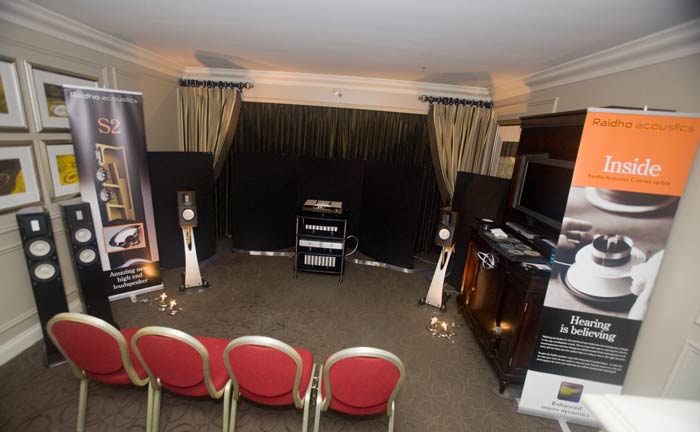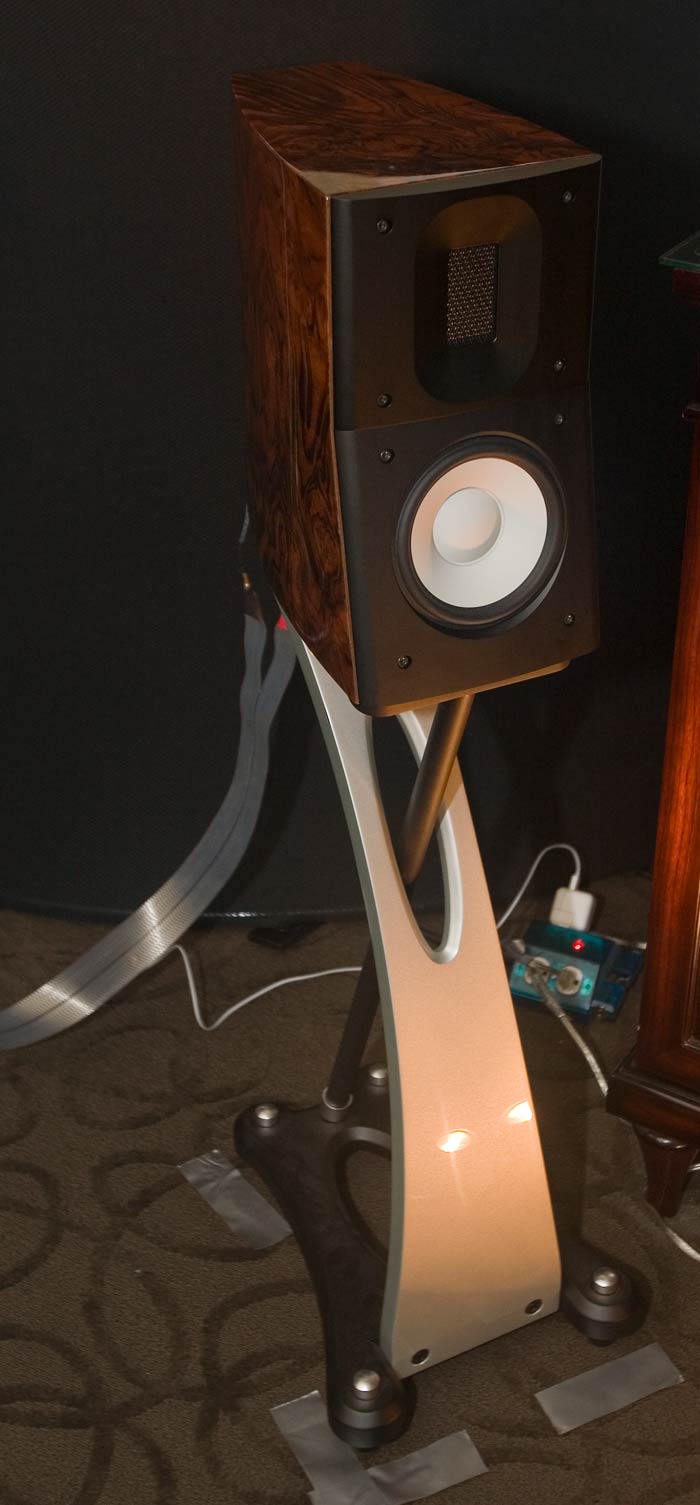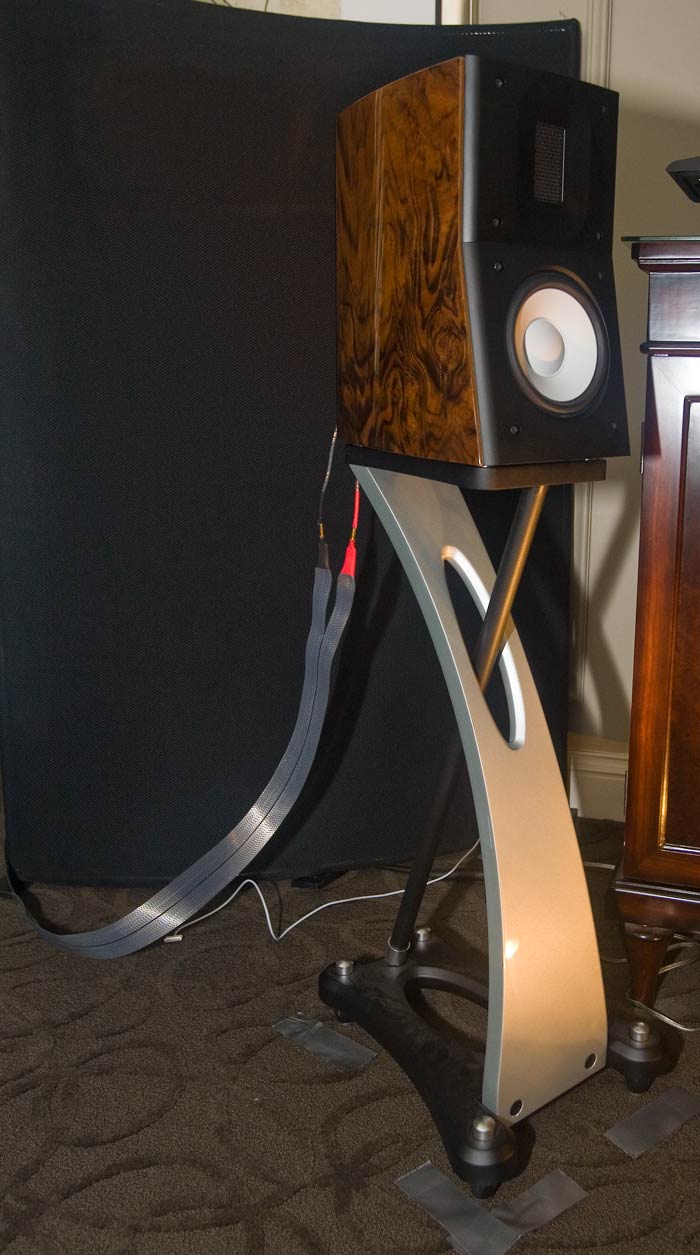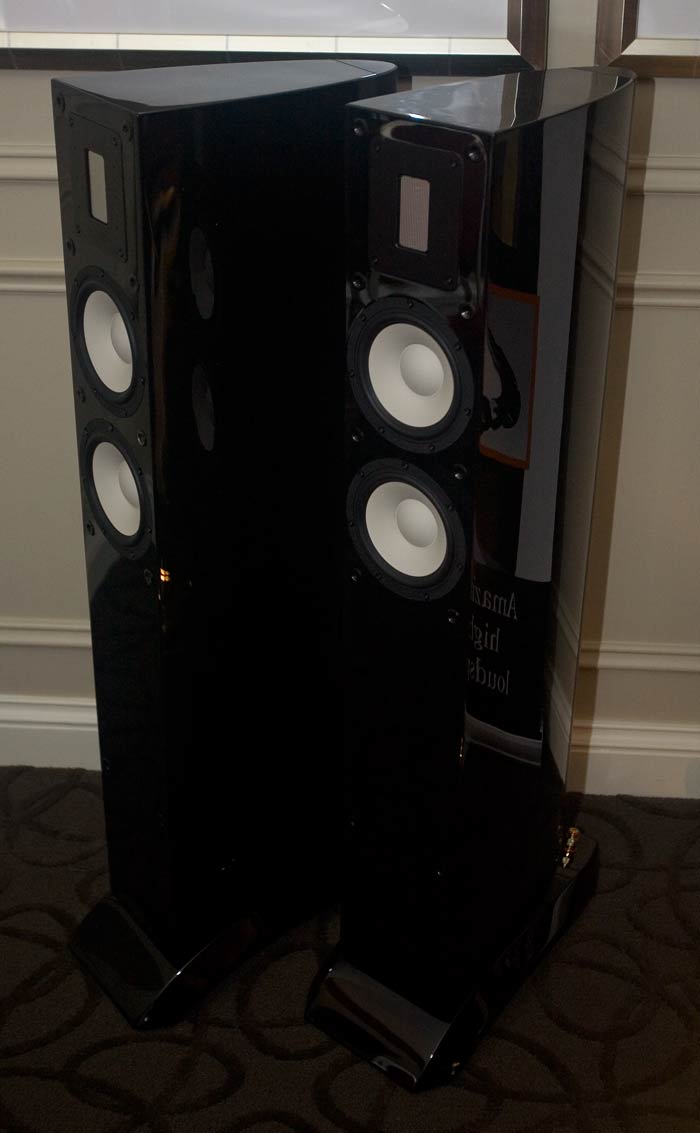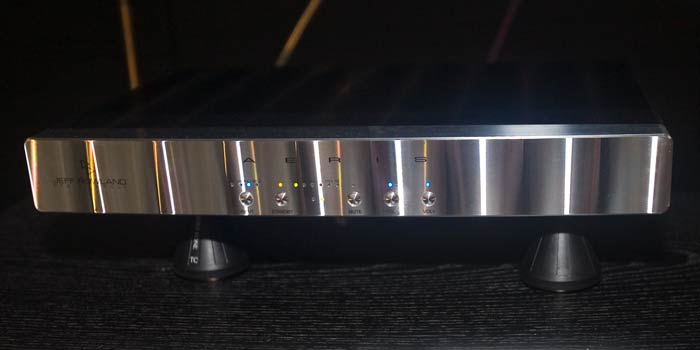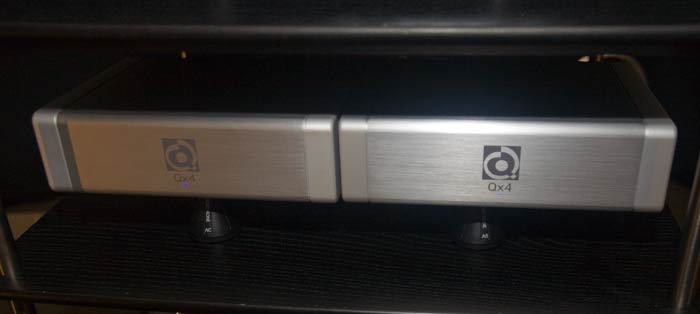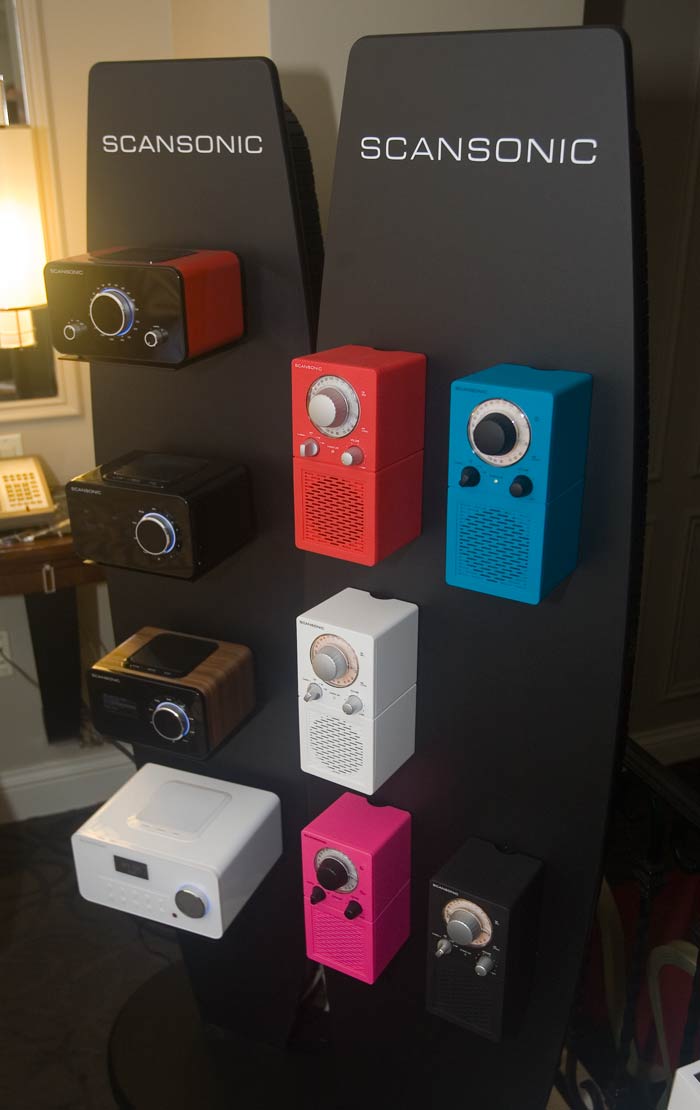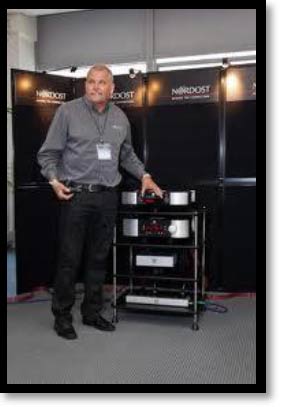[From the Spintricity Archives several years ago. Note that Elrod has upgraded their power cords, adding more resolution while keeping the natural openness and dynamic ease which is their house sound].
‘Shootout at the Powercord Corral’,’
Elrod versus Acrolink versus Valhalla versus ODIN
We listened to these power cords in various combinations on a simple, very high-quality system composed of a EMM Labs CDSA CD/SACD player connected to an Audio Note U.K. Ongaku integrated amplifier into the Marten Coltrane loudspeakers.
Speaker cables were Nordost ODIN throughout the listening sessions.
Interconnect between the CDSA and Ongaku was either the Jorma Design PRIME and, on the last few tests, Nordost ODIN
The ODIN PC was the 1.25m length. This is actually 56″ long, just a hair less than 1.5m. It is fairly stiff and it takes about 8 inches of its length to make a non-stressful 90 degree turn, i.e. to plug it into something, like a wall or component.
—–
This was not a shootout to determine the ‘best’ power cord, per se, and Acrolink makes a better power cord than the 7100N, which is the least expensive of their Mexell series – now distributed by Esoteric, and the latest Elrod power cords now come with Oyaide connectors. It was instead a process to determine whether the significantly more expensive Nordost ODIN power cord, by roughly a factor of four, was really significantly better than the others, and, if so, in what ways was it better.
For most of the tests, a Valhalla powercord was on the CDSA. This would not be our usual choice of powercord for the CDSA – we prefer a very balanced sound – and the basic signature of the Valhalla PC: fast, clear, detailed, and neutral harmonically is too much like the signature sound of the CDSA. But in this case we wanted to identify, if possible, any synergy between the Valhalla and its bigger brother, the ODIN.
The first battery of tests were performed by Neli and I. We tried 3 PCs on the Ongaku: the ODIN and the ELROD.
Brothers in Arms – title track, Bronco, Chopin
It takes a while to get our ears warmed up. We started with the ODIN. Listened to our 3 test songs, then moved to the ELROD.
The ELROD was bigger sounding, a bigger soundstage. Imaging was less distinct. Leading edge to notes was not as clearly defined. Rounder. Not as tight, edgier [made us think about changing the PC on the CD player]. Not as much emotion, nor separation. Not as even top-to-bottom. Not nowhere near as much resolution. Left to right soundstageing a little more pronounced? Blotchier? Neli says less pure, not as open, sound stage depth not as deep, noisier. Bigger slam.
Back to ODIN
ODIN more delicate. Almost Lamm ML3 resolution. Hear the effort and care vocalist is putting into each word. Neli says is more pure.
Way more sense of care and delicacy. Same PRaT as ELROD. Way blacker background. More emotion. Less slam. Better presence and imaging. Not as room filling.
The next evening we decided at the last minute to invite Kevin and Steve up to hear the PCs. Only Kevin was able to make it. We again started with the ODIN. Then we moved to the Acrolink.
We played a Back Cello piece, Dire Straits, and an Elton John outtake
Acrolink: More recessed. Again a different treatment of left-to-right soundstage information, just like the ELROD. Not as much body. Some percussive noises where highlighted, like the clacking of a bow on a cello. Less resolution. Not as much separation or presence. Not to make fun of Kevin, but to point out the difficulty hearing differences without going back and forth a few times, and especially starting out with the better sounding component first, his initial impressions during this part of the shootout was that the Acrolink was sweeter on top, and had more body on the bottom, and he liked the AcroLink and ODIN about the same. It was not much later that his opinion was somewhat, a little bit, completely and radically transformed.
On Dire Straits, the AcroLink had a deeper slam, less resolution, not as much delicasy, lower bandwidth, not as engaging, not as much separation – notes run together in a sort of cloistered, unpleasant fashion. Can’t hear decay as well, not as black. I like to focus on cool sounds in this piece, but couldn’t, the sounds were too mixed up.
On Elton John, I first thought that the smoothing the PC was doing helped make this somewhat rough sounding piece nicer – more accessible. The reduced dynamics made piano seem less real. Sounds more like a stereo system.
Switched back to ODIN.
On Elton John: In first few seconds it was overwhelming the difference and improvement the ODIN made. The ELton John was Kevin’s CD and he became glued to the sound, I think trying to hear all of the nuances he has been missing all of these years. We all came away with a MUCH greater appreciation of Elton John’s expertise with vocals and piano. My notes are pretty brief at this point. Presence. Delicacy. Subtleties. The excruciating care with which Elton played the piano at the beginning of the song was revealed [much like the ML3 reveals these little things musicians are doing on these CDs and LPs that we hardly ever, if ever, hear in the listening room].
Switched to Valhalla [now on both EMM Labs CDSA and the Ongaku]
[We started playing only the Elton John song – yes many, many times. As our ears learned to hear farther and farther into this system, we could switch something in and out and hear what it did quicker and quicker. Which was good, because even so, this test took 6 hours, with about a 1/2 hours break upstairs to eat Vietnamese carryout and listen to vinyl on the big system]. Blanched, compressed, thread bare, voice more forward, piano more recessed. Flatter soundstage. More like a stereo. Stereo sound more familiar, more accessible. Easy to listen to and understand [see forthcoming article on ‘worse is worse but a lot more familiar’]. Less resolution. Kevin: Thinner, glassier, piano monochromatic.
Guess I should say here that even though the Valhalla came out badly in this test, we did come to prefer it over the ELROD on the CDSA [with the ODIN on the amp, and having not tried the AcroLink on the CDSA].
Switched to ELROD on Ongaku [Kevin hadn’t heard this yet, only Neli and I had heard this, on the night previous]
Bigger sound. Bigger images. More forward. Rounder. Color about the same, but fewer shades. Kevin thought the voice was emphasized above the other sounds [see later test with ELROD on CDSA – a characteristic of the ELROD is that it emphasizes bass, like male voices].
ODIN now on CD player, ELROD on Ongaku integrated
More or less same quality added to system as ODIN on amp except: guess that only 50% as good for music as putting ODIN on amp. Guess about 90% as good for voices as putting ODIN on amp.
Swap: ELROD on CDSA, ODIN on Ongaku
Slightly smoother? Slightly more body? Less separation. Less precise.
Changed interconnect between CDSA and Ongaku to ODIN from Jorma Design PRIME
The voice! Elton John’s voice was magnificent. Big. Present. Real. Quite an indelible impression was made by the voice. I thought, however, the piano has less body. However, Kevin thought [uninfluenced by my opinion. I write my notes and then ask everyone else’s opinion before I say anything] that the piano was more beautiful.
In any case, we want to congratulate Elton John. Neli and I aren’t big fans like Kevin is – and that is largely because we have seemingly only heard his music on inferior equipment. He is quite skilled.
Swap: Valhalla on CDSA [ODIN still on Ongaku and between CDSA and Ongaku]
Piano is more delicate, more separation. More real. Voice a little less body. Less real? Or just less spectacular?
As a farewell to the shootout, we played Dire Straits. So open. So much separation. So much fun to listen to.
Synthesis
We learned a lot of things during this shootout.
We learned to hear the telltale signature of the ELROD PC in a system. We like and use ELROD quite a bit here. And listening to those systems, we can now hear the slight emphasis on the bass frequencies and the slight overhang of each note as its decay lasts the tiniest bit too long. This slight overhang causes there to be a correspondingly slight lack of separation and the perception of a, again, slightly higher noise floor.
We learned that, in a partially ODIN-power-corded system, the Valhalla power cord’s telltale signature was much harder to detect – that it sounds like a dynamically compressed ODIN, and it’s specific sound does not call attention to itself.
We learned to hear the AcroLink’s telltales – a highlighting of the upper midrange, which we knew, but now also the corresponding lack of emphasis everywhere else.
We learned that the ODIN helped the Ongaku sound a lot more like the Lamm ML3 in terms of linearity and the revealing of many subtleties in the sound. Linearity in terms of the dynamic, harmonic and timing responses being much more even across the frequency band. Subtleties in terms of a lot of information present at a live show were now evident – not because certain frequencies were spotlit, like some speakers do, but because there is a blacker background. A lower noise floor not because information, subtleties are removed, like most conditioners and vibration controls and other tweaks, but because – well, I am not sure why. Apparently most power cords impart their own noise to the system.
We learned to wonder, if the ODIN made the Ongaku sound more like the ML3, what would the ODIN on the ML3 sound like?


